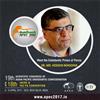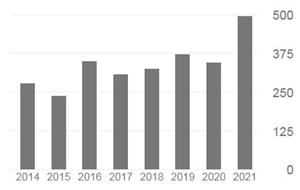An Evaluation of the Effect of Blood and Human Serum on the Surface Microhardness and Surface Microstructure of Mineral Trioxide Aggregate
Aim: Short-term and long-term evaluation of the effect of whole human blood or serum contamination on the surface microhardness value and microstructure of white and grey mineral trioxide aggregate (MTA). Methodology Three groups of 10 samples for each type of MTA were prepared. The first group was mixed with and exposed to fresh whole human blood. The second and third groups were mixed with distilled water and exposed to fresh whole human blood or human serum, respectively. The control group samples were mixed with and exposed to distilled water. During preparation, 1 g of MTA was triturated with 0.33 g of the selected liquid using an amalgamator and placed inside borosilicate cylindrical moulds. The samples were treated with ultrasonic energy. Vickers surface microhardness values were compared after 4 and 180 days. Scanning electron microscopy (SEM) analysis was performed after 4 days.
Results: White MTA had a greater microhardness value than grey MTA in all groups. There was a significant difference between the control and the experimental groups (P < 0.00001). There was no significant difference between the microhardness values obtained after 4 and 180 days, apart from grey MTA mixed with blood or exposed to serum (P < 0.00001). SEM analysis showed the contaminated samples were devoid of acicular crystals that were prominent in the control groups.
Conclusion: Blood contamination had a detrimental effect on the surface microhardness of MTA in the short and long term. If blood or serum contamination is unavoidable under clinical conditions, it might be preferable to use white MTA.














